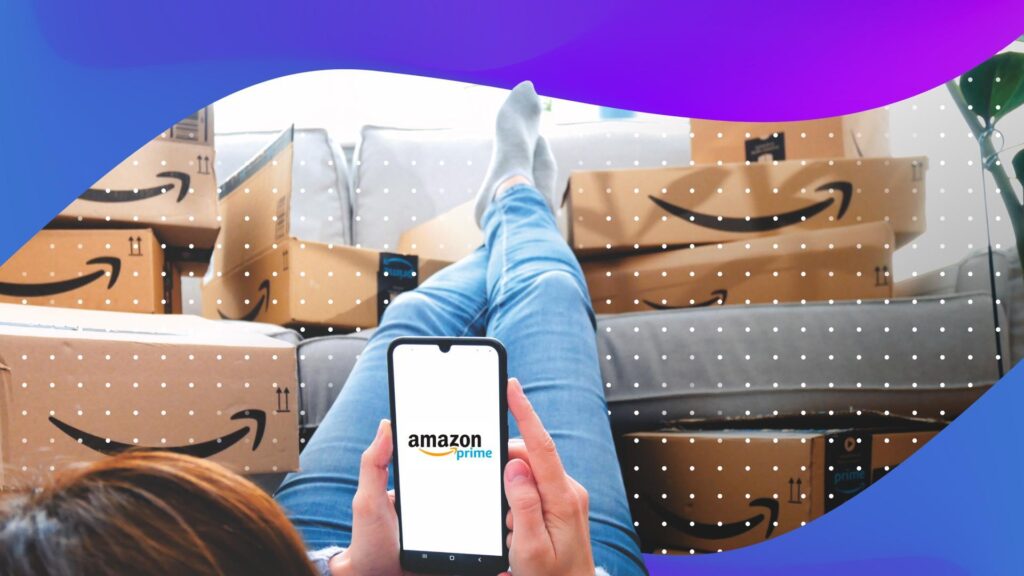The future is now: today’s top retailers are leveraging once-futuristic technology like augmented reality (AR), machine learning, and artificial intelligence (AI) to create more connected, seamless shopping experiences across channels, from ecommerce to brick-and-mortar and everything in between.
In this article, we’ll cover how AI in retail is taking shopping to a whole new level.
What is Artificial Intelligence?
AI refers to the power of a computer to copy and exhibit intelligent human behavior. These computers are “trained” by processing enormous amounts of data to make autonomous decisions with human-like or intelligent behavior.

In retail, applications of artificial intelligence can span the entire customer experience, from browsing to post-sale interactions.
As AI-powered technology continues to evolve, we can expect to see more and more retailers both online and off adding it to their sales process.
10 Examples of AI in Retail:
Here are 10 game-changing examples of artificial intelligence in the retail space. These companies using AI are paving the way for retailers to create omnichannel experiences that surprise and delight customers.
Based on these examples of artificial intelligence in retail, it’s clear that AI and machine learning will increasingly shape our shopping experiences in 2019 and beyond.
As more and more retailers adopt this technology, we’re likely to see the line between online and in-person shopping continue to blur, with more personalization (and smarter technology) in every step of the retail process.
1. Sephora Color IQ
Ahead of the game, Sephora launched its Color IQ product in stores in 2012. Color IQ is an AI-powered product that scans shoppers’ skin to provide customized shade recommendations for foundation and concealer.

Adding this as an in-store-only feature allowed Sephora to increase foot traffic while creating a more personalized, creative, and unique shopping experience for every customer who enters their store.
2. Olay Skin Advisor
Another example of leveraging machine learning to provide beauty product recommendations, Olay Skin Advisor analyzes shoppers’ selfies to diagnose their “skin age” and problem areas.

Olay scanned over 50,000 faces while developing the tool’s AI technology, meaning that the estimates are backed with data.
Once a user’s skin has been analyzed via selfie, Olay offers tailored recommendations of products from its anti-aging skincare line.
3. Stitch Fix
Online clothing subscription service Stitch Fix uses AI to tailor apparel recommendations to its customers at scale.
Stitch Fix delivers personalized recommendations to customers on a monthly basis, then allows the customers to keep what they love and return the rest.

Customers then provide feedback that makes the next batch of recommendations even more tailored to their tastes.
The AI behind Stitch Fix’s recommendations draws from customer measurements and feedback, current styles and trends, and the expertise of personal wardrobe stylists to provide a truly personalized experience.
4. North Face + IBM Watson
Here’s another example of how AI can be used to provide personalized recommendations: North Face has leveraged IBM Watson’s machine learning technology to “help you find the perfect jacket for your next adventure.”
Shoppers answer a series of questions about what their future jacket will be used for — commuting, hiking, skiing, etc. — and where.

The site then provides its recommendations for jackets based on a match percentage, sorting them from the highest recommended match to the lowest.
5. ASOS
Online fashion retailer ASOS uses AI to recommend clothing sizes to shoppers based on what they’ve purchased — and kept — in the past.
Returns are inconvenient for shoppers and time-consuming and costly for retailers.

To minimize returns, ASOS analyzes which items and sizes customers return, and which ones they keep.
This data helps inform future machine learning-powered size recommendations, which in turn provides a better customer experience, reduces return rates, and saves on return processing costs.
6. Third-party retailers + Amazon Echo
While Amazon’s Echo devices can be used to shop via voice from Amazon, a variety of third-party retailers are joining in on the machine learning trend by allowing customers to shop via Alexa from their websites as well.

Some examples include Best Buy, REI, and 1-800-Flowers. If you’ve already made a purchase, Alexa can also check your order status at select stores.
Beyond retail, you can even order a pizza through Domino’s or request a ride through Uber with simple Alexa voice commands. As we said, the future is now.
7. Target + Pinterest Lens
Pinterest’s Lens feature uses AI technology and the camera of the Pinterest app to allow users to take photos and then search for visually similar pins. This technology is meant to place shoppers into the buying cycle exactly at the moment of discovery.

Target incorporated the Lens feature into their own website search in 2017.
This was the first time Pinterest licensed out its Lens technology in a retail environment, allowing Target to get the jump on the visual search trend and create “an incredibly rich and much easier way for our guests to explore, discover and buy millions of products at Target,” according to Kristi Argyilan, Target’s Senior Vice President, Media and Guest Engagement.

8. Amazon Go
Always a leader in retail technology, Amazon is attempting to revolutionize not only the way people shop online but also the way we interact with brick-and-mortar stores.
Amazon’s cashierless grocery store, called Amazon Go, completely automates the grocery shopping experience.

Shoppers check-in via app, then sensors throughout the store track which items they put in their basket. T
hen, customers can just take their items and leave. No checkout lines, no cashiers, no baggers; Amazon automatically charges shoppers when they leave the store.
While there are currently only 9 Amazon Go locations across the country, this technology has the potential to reshape how consumers shop every day.
9. eBay’s repricing technology
eBay is using AI to help its sellers sell more. Its inventory and pricing AI solution alerts sellers to gaps in inventory of a particular product so that they can stock up. The technology also makes pricing recommendations that help sellers price their products competitively.

The solution is seamless and fully integrated into the seller’s eBay experience, giving automatic recommendations when demand shifts or certain products are trending.
10. Tommy Hilfiger chatbot
As one of many luxury brands leveraging chatbots to improve the customer journey, Tommy Hilfiger’s Facebook Messenger chatbot gives users a more personalized and interactive shopping experience than traditional online shopping.

Users can browse the latest Tommy Hilfiger collections or get a behind-the-scenes look at the latest fashion show.
The chatbot also uses language processing technology to not only reply to customer queries but also offer style advice and product recommendations.
By asking a series of questions, the bot gathers information about the user’s personal style preferences and makes an outfit suggestion based on the data given.
Experts Chime in:
We asked Ted Mann, CEO at Slyce who has worked with Tommy Hilfiger on a number of new technologies (including their most recent app “Tommy Now”) how brands should approach new shopping technologies such as visual search, augmented reality and artificial intelligence:

“I would say if you are new to the space – the first thing you can do is familiarize yourself with what the current experiences look like.
Download any of those retailer apps mentioned above – like Nordstroms, Home Depot, Pinterest, or Amazon. Get familiar with the flow of it – because each of those solutions work a little differently.
Once you get a sense of how things work then you can start to figure out how your brand can benefit from this type of technology. Maybe you can offer your customers a way to create an outfit or style their living room?
But I definitely think the best way to start is to dive in and utilize the technology.”
You Might Be Interested In












